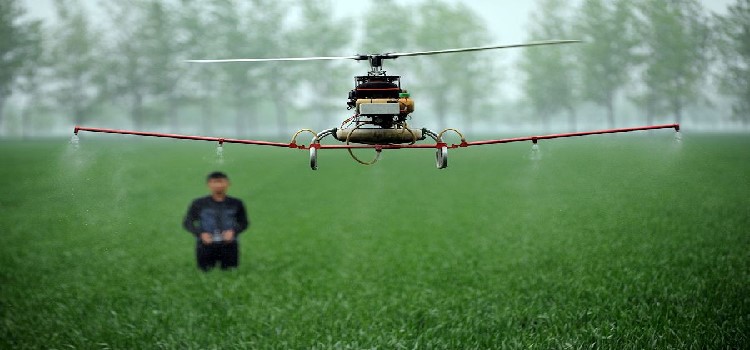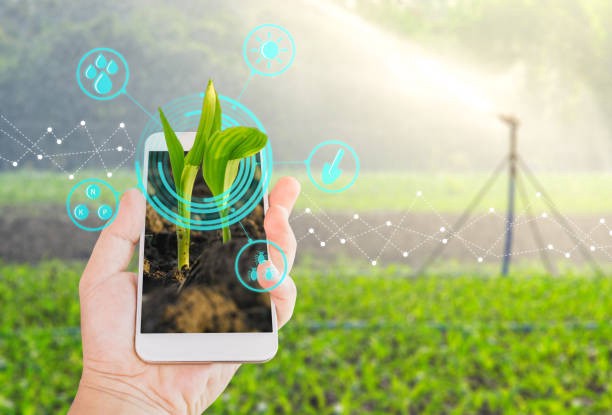
Mexico Agriculture Robots Market by Type (Driverless Tractors, Unmanned Aerial Vehicles (UAVs), Milking Robots, Automated Harvest Robots, and Others), Offering (Hardware, Software, and Services), Farming Type (Indoor Farming and Outdoor Farming), Application (Dairy Management, Irrigation Management, Harvest Management, Soil Management, Inventory Management, and Others), and End User (Field Crops, Fruits & Vegetables, Livestock, and Others) – Opportunity Analysis and Industry Forecast 2023–2030
Industry: Agriculture | Publish Date: 13-Jul-2023 | No of Pages: 87 | No. of Tables: 73 | No. of Figures: 31 | Format: PDF | Report Code : N/A
Market Definition
Mexico Agriculture Robots Market size was valued at USD 215.64 million in 2022, and is predicted to reach USD 962.52 million by 2030, with a CAGR of 19.3% during the forecast period, 2023–2030. Agricultural robots, often known as agribots or agri-robots, are machines that are meant to automate or semi-automate certain agricultural operations. These robots' capabilities include planting, harvesting, monitoring, and spraying crops.
These robots are being developed to increase agricultural efficiency, production, and precision while reducing reliance on physical labor and improving farmer working conditions. They make use of cutting-edge technology such as computer vision, artificial intelligence (AI), and others. Sensors, actuators, and sophisticated algorithms enable agribots to sense their surroundings, make judgments, and carry out particular operations. These robots can use GPS or mapping technology to go around fields, plant seeds, harvest crops, apply pesticides or fertilizers, and check crop health. They employ computer vision to recognize and distinguish between crops and weeds, detect pests and illnesses, and take appropriate action.
Dealing with Labor Issues: Robotics and Automation in Mexico's Agriculture Sector
With rising labor costs and a shortage of skilled agricultural workers, farmers are turning to robotics and automation to mitigate these challenges. Therfore, farmers are adopting agriculture robots, which can perform labor-intensive tasks more efficiently, reducing reliance on manual labor and increasing productivity, which is expected to boost the agriculture robots market growtg in the country.
Agriculture robots offer a promising solution by performing labor-intensive tasks with higher efficiency and productivity compared to manual labor. These robots can handle various agricultural tasks, such as planting, harvesting, weeding, and crop monitoring, with precision and speed. By automating these tasks, farmers can reduce their reliance on human labor, which has become scarce and costly in Mexico.
Growing Market for Agriculture Robots in Mexico
Mexican companies are starting to invest in the development of agribots and other automated systems for use in the country's farms and fields. Some of the agricultural robots used in Mexico include drones for crop scouting, automated systems for weeding, and robotic milking systems for dairy cattle. The market growth of agriculture robots in Mexico is driven by the increasing presence of leading robotics companies launching their products in the country's agriculture sector.
For instance, in October 2021, WiBotic Inc., a specialist in energy management and autonomous charging solutions for aerial, mobile, marine, and space robots, announced that Gtt NetCorp, Inc. will be one of the initial authorized partners to resell its solutions and act as a representative for WiBotic products in Mexico.
High Cost of Implementation
The high initial investment required to procure and implement agriculture robots in Mexico presents a significant obstacle for many farmers, especially those operating with limited financial resources or on a smaller scale. This investment encompasses not only the purchase cost of the robots but also the necessary infrastructure and equipment to optimize their utilization. Consequently, the substantial upfront costs act as a restraint on the expansion of the agriculture robots market in the country.
Growing Technological Advancements in the Region
The ongoing advancements in robotics such as artificial intelligence (AI), and sensor technologies offer significant opportunities for the development of advanced agriculture robots in North America. These technological advancements enable the creation of more sophisticated and capable robots that can revolutionize farming practices. This advancement is anticipated to drive substantial growth opportunities for the agriculture robots market.
Competitive Landscape
The agriculture robots industry includes several market players such as Verdant Robotics, Agrobotix LLC, DroneDeploy, Harvest Automation Inc., DeLaval Inc., Blue River Technology, John Deere, Clearpath Robotics, Solinftec, and GEA Group. These market players are adopting various strategies such as innovation and collaboration to maintain their dominance in the market of Mexico.
In January 2022, John Deere launched an autonomous tractor, which integrates Deere's 8R tractor, TruSet-enabled chisel plow, GPS guidance system, and innovative technologies. Farmers can expect to access the autonomous tractor later this year, marking a significant step forward in agricultural automation.
Key Benefits
-
The Mexico agriculture robots market report provides a quantitative analysis of the current market and estimations through 2023-2030 that assists in identifying the prevailing market opportunities to capitalize on.
-
The study comprises a deep dive analysis of the market including the current and future trends for depicting the prevalent investment pockets in the market.
-
The information related to key drivers, restraints, and opportunities and their impact on the market is provided in the report.
-
The competitive analysis of the market players along with their market share in the Mexico agriculture robots market.
-
The SWOT analysis and Porter’s Five Forces model are elaborated in the study.
-
Value chain analysis in the market study provides a clear picture of the stakeholders’ roles.
Mexico Agriculture Robots Market Key Segments
By Component
-
Driverless Tractors
-
Unmanned Aerial Vehicles (UAVs)
-
Milking Robots
-
Automated Harvest Robots
-
Others
By Offering
-
Hardware
-
Software
-
Services
By Farming Type
-
Indoor Farming
-
Outdoor Farming
By Application
-
Dairy Management
-
Irrigation Management
-
Harvest Management
-
Soil Management
-
Inventory Management
-
Others
By End User
-
Field Crops
-
Fruits & Vegetables
-
Livestock
-
Others
KEY PLAYERS
-
GEA Group
-
CNH Industrial
-
Delaval
-
Deere & company
-
AGCO CORPORATION
-
Trimble Inc.
-
Naio Technologies
-
Yanmar Holdings Co. Ltd.
-
SZ DJI Technology co. Ltd.
-
Boumatic
-
Harvest Automation Inc
-
Autonomous Solution Inc
-
Clearpath Robotics
-
Ageagle Aerial System
-
Kubota Corporation




 Speak to Our Analyst
Speak to Our Analyst

































